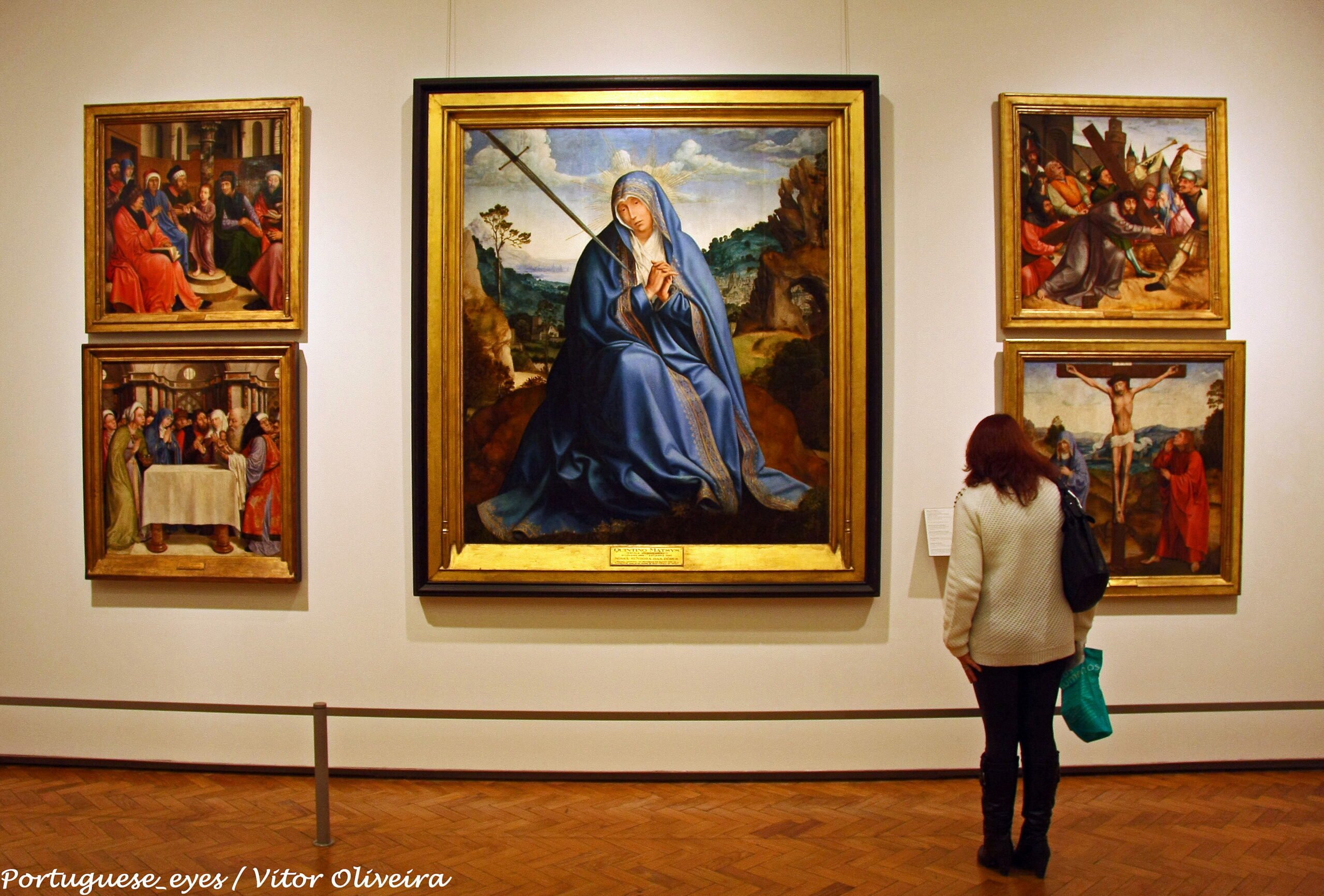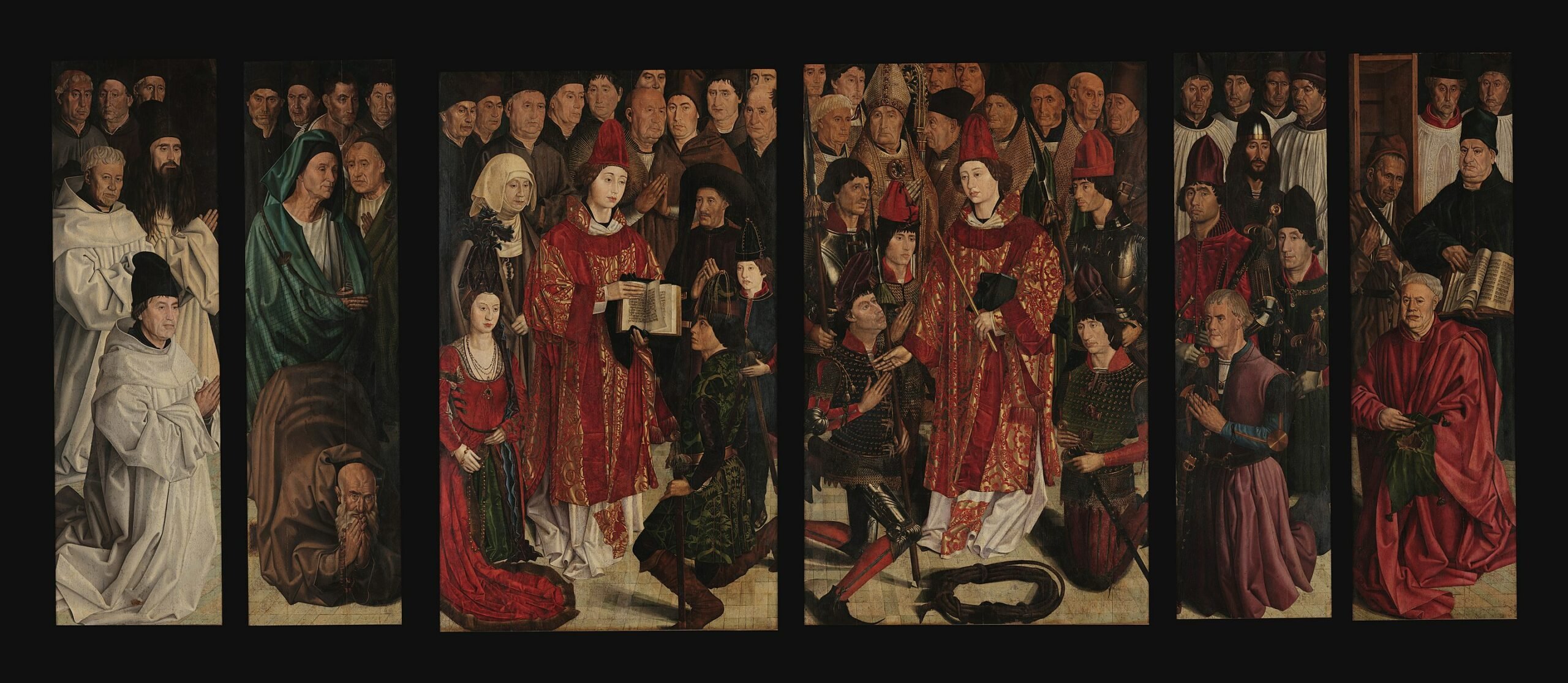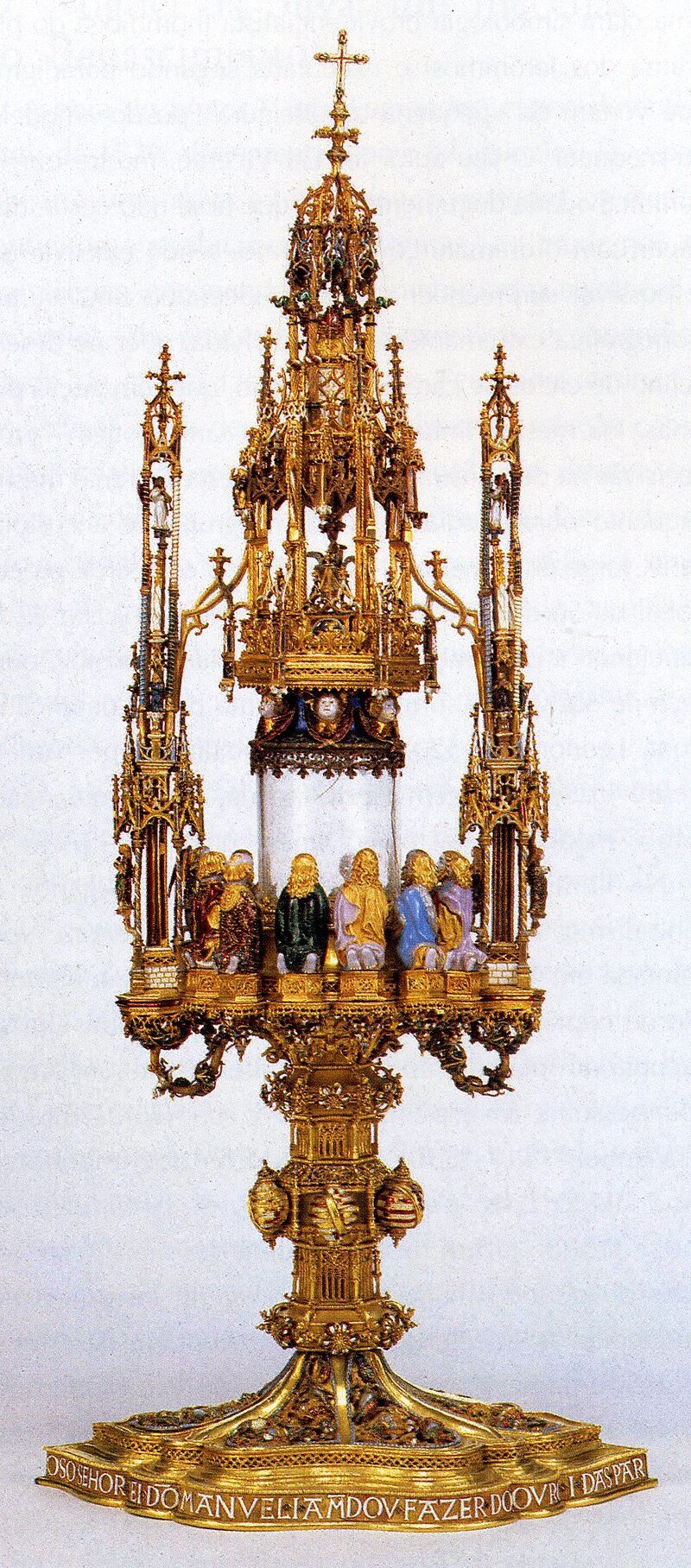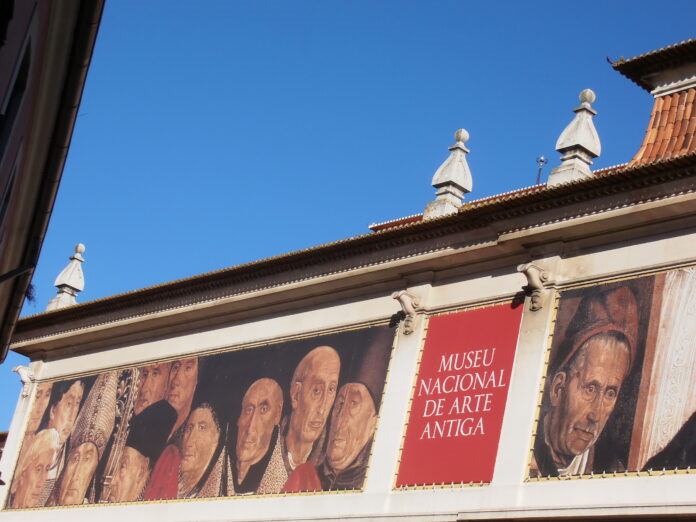Are you a museumgoer? Are you planning to visit Lisbon soon? Perfect! We’ve been expecting you! We’ve prepared quite a comprehensive guide about the National Museum of Ancient Art that will undoubtedly spark your curiosity!
Keep reading to learn some details about the museum’s history and the most significant art pieces in its collection! We’ve also included information about the location, hours, and prices. As a bonus, you’ll discover what else you can visit in the region after finishing your museum tour!
National Museum of Ancient Art – History
The roots of the National Museum of Ancient Art (Museu Nacional de Arte Antiga – MNAA) can be traced back to the beginning of the 19th century.
Back then, religious orders were abolished, and religious artwork was brought into the public sphere. The art pieces were gathered in a deposit in Lisbon until the authorities would decide what to do with the collection, which included primarily paintings. Many of those paintings had been greatly damaged. Some had even been lost on the way to the Lisbon deposit. Nonetheless, the collection was quite impressive.
In 1836, The Academy of Fine Arts was established, and shortly after, the Academy founded the National Gallery of Painting. Over the years, the gallery acquired numerous other pieces of art, particularly in the aftermath of the Portuguese Liberal Wars when some private art collections were expropriated.
In 1884, the government purchased the Janelas Verde Palace and established the National Museum of Fine Arts there. At that time, the collection that is now on display at the National Museum of Ancient Art was on display in that museum. The same museum collection included the artworks we can now see in the National Museum of Contemporary Art.
They remained one single collection until the government decree issued on the 26th of May 1911, following the 1910 revolution, which aimed at overthrowing the Portuguese monarchy and replacing it with the First Portuguese Republic. After this, the National Museum of Fine Arts split into the National Museum of Ancient Art and the National Museum of Contemporary Art. The former kept all artworks signed before 1850 and remained in the Janelas Verdes palace.
National Museum of Ancient Art – Collection Highlights
Today, the National Museum of Ancient Art has over 40,000 artworks! Paintings, sculptures, ceramics, textiles, drawings, and prints – all these are on display for art enthusiasts! The museum has furniture and gold/silverware collections, as well as pieces of art associated with the Portuguese Discoveries.

The collection includes artworks signed by both Portuguese and foreign artists, including:
- Nuno Gonçalves
- Jorge Afonso
- Francisco de Holanda
- Francisco Henriques
- Francisco Vieira
- Jacob Adriaensz Backer
- Hieronymus Bosch
- David Gerard
- Albrecht Duerer
- Anthonis Mor
- Francisco de Zurbaran
- Francois Boucher
- Andrea del Sarto.
If you want to discover some incredible details about the most significant artworks you’ll see on display, keep reading!
1. St. Vincent Panels
The St. Vincent Panels consist of six paintings possibly signed by Nuno Gonçalves. These artworks are highly praised in the country for their symbolic and cultural importance.
The paintings depict a group of 58 people gathered around St. Vincent. The whole artwork is an amalgamation of various social groups brought together for veneration shown to the patron of the Maghreb military expansion of the 15th century.
The panels are celebrated for their masterful portrayal of human figures – in terms of facial expressions, costumes, and accessories.

2. Hell
Another painting displayed at the National Museum of Ancient Art that will likely catch your attention is Hell, executed probably sometime between 1510 and 1520. Unfortunately, the author of this artwork remains unknown.
As its title suggests, the painting depicts a medieval image of Hell. It incorporates various torments one can endure after committing deadly sins.
3. Cross of Dom Sancho I
The Cross of Dom Sancho I dates from 1213. Like in the case of Hell, the creator of this remarkable all-gold piece remains unknown. However, specialists confirmed that the piece was commissioned by Dom Sancho I for the Mosteiro de Santa Cruz in Coimbra.
Besides being made of solid gold (which is remarkable enough already!), the cross is adorned with precious stones and pearls. The reverse of the cross displays some engravings, including a lamb, the symbol of death and sacrifice, as well as the symbols of the four evangelists: the lion of St. Mark, the eagle of St. John, the bull of St. Luke, and the angel of St. Matthew.
4. Belém Monstrance
The Belém Monstrance is probably one of the most famous pieces in the museum’s collection. Dating from 1506, it can possibly be attributed to Gil Vicente, a celebrated Portuguese goldsmith. The cross was commissioned by King Manuel I for the Mosteiro de Santa Maria de Belém.
The gold used for this artwork was brought from Kilwa (present-day Tanzania) to Portugal by Vasco da Gama. The king of Kilwa had sent the gold to Portugal as a sign of vassalage (a position of subordination).
Designed as a symbol for the veneration of the congregation, the monstrance is adorned with twelve apostles kneeling in the center. You can also notice a dove hovering above them, which is the symbol of the Holy Spirit. There’s also a figure of God holding the globe. As such, the monstrance is regarded as a representation of the Holy Trinity.
Additionally, one can also notice the emblem of King Manuel I. This is not surprising, after all. Most of the artworks and churches commissioned by him were marked by his emblem.

5. Table Centerpiece by Thomas Germain
One of the most praised artworks displayed at the National Museum of Ancient Art is the table centerpiece signed by Thomas Germain, a famous silversmith.
It was commissioned by the Duke of Aveiro likely in the context of the ritual service à la française instituted at the end of the 17th century. It is a remarkable silver piece that would take anyone’s breath away!
6. The Chinese Pot
The Chinese Pot probably dates from 1757-1600. It is one of the few examples of 16th-century Chinese export pottery. It bears the insignia of the Augustinian Order.
The decorations of the pot indicate that the artwork was likely created for a monastery, possibly Convento de Nossa Senhora da Graça in Macau, China.
The piece was purchased in 1959 from an art market in Amsterdam.
7. The Salt Cellar
The salt cellar is a unique piece originating from Africa’s west coast. It serves as evidence of the major cultural exchange that occurred during the Portuguese Discoveries.
The incomplete salt cellar dates from the 16th century and was likely created in Benin, Africa. The figures portrayed in this piece have remarkable physiognomic characteristics and costumes, which point to traditional African craftsmanship. Some of the textile patterns reproduced in this artwork are still seen in Nigeria.
8. The Namban Folding Screens
These spectacular pieces entitled the Namban Folding Screens attest to the relationship between Portugal and Japan. They depict the arrival of the Portuguese vessels in Nagasaki in 1543. The screens were likely created at the beginning of the 17th century and are among the few artistic documents that bring immense value to such a significant historical moment.
The Namban Folding Screens were created using wooden lattice, paper, gold leaf, silk, lacquer, and copper gilt.
A screen pair was purchased from an art market in Paris, while the other was acquired from Japan. One pair is attributed to Kano Naizen, while the second was likely created by Kano Domi.
9. Salome with the Head of St. John the Baptist
An iconic painting signed by Lucas Cranach, Salome with the Head of St. John the Baptist was created at the beginning of the 16th century. The artist, a contemporary of Albrecht Duerer and Grunewald, was part of the German Renaissance.
This artwork stands as proof of his mastery. It also marked the beginning of a series of other works focused on the power of women, thus contributing significantly to the exude eroticism that would become characteristic of Cranach’s works.
10. The Annunciation
Although purchased only recently, The Annunciation is probably one of the most notable pieces in the museum. It opened the doors to 15th-century Portuguese painting.
The painting dates from 1430-1434 and was executed by Álvaro Pires de Évora, a painter considered estrangeirado, meaning that he used foreign styles and traditions in his artwork. He is now regarded as one of the founding fathers of Portuguese painting.
The Annunciation was likely created at the end of the painter’s career and is a remarkable piece that serves as testimony to his impressive technique.
11. St. Jerome
St. Jerome, also known as St. Jerome in His Study, is an oil painting signed by Albrecht Duerer, yet another German Renaissance artist.
The painting was executed at the beginning of the 16th century when Duerer was living in the Netherlands. He then donated it to Rodrigo Fernandes de Almada, the head of the Portuguese trade mission in the Netherlands. The painting remained in his family’s possession until 1880. Afterwards, it was donated to the MNAA.
As its title suggests, the painting depicts St. Jerome, the patron saint of Christian humanists. It is considered one of his most accurate and detailed portraits.
12. Triptych of Temptation of St. Anthony
Triptych of Temptation of St. Anthony is an oil painting signed by Hieronymus Bosch, one of the most prominent painters of the Early Netherlandish school.
Divided into three wood panels, the painting depicts the spiritual torments endured by Anthony the Great, also known as Anthony of Egypt. The painting also portrays several fantastic images, and brings together air, earth, fire, and water – the four elements of the Universe.
The painting dates from the beginning of the 16th century.

National Museum of Ancient Art – Location, Hours, Tickets
The National Museum of Ancient Art is located on Rua das Janelas Verdes in Lisbon. If you’re using public transport, here are the routes that will take you to the museum:
- Buses: 713, 714, 727, 728, 732, 760
- Trams: 15E, 18E, 25E
- Train: the Cascais Line
- Metro: You can also take the metro line to the Rato station, but you’ll have to walk around 32 minutes to get to the museum
The National Museum of Ancient Art is open from Tuesday to Sunday, from 10 am to 6 pm. However, some museum rooms have restricted access and may be closed. For example, the rooms on level two are closed between 1 pm and 2 pm.
The standard ticket costs 10 EUR. Nonetheless, if you purchase a family ticket for one adult and one child under 18 years, you’ll pay half the price. Seniors and young visitors under 24 can also benefit from a 50% discount. Children under 12, teachers, tourism workers, journalists, and other similar professionals can enter for free.
If you want to visit the exhibition entitled Shared Identities. Spanish painting in Portugal, you’ll have to get a separate ticket that costs 5 EUR. However, you can buy a joint one for 12 EUR.
The museum also has a restaurant that overlooks the river where you can enjoy a pleasant Portuguese lunch. It is open from Tuesday to Sunday, from 10 am to 5:30 pm.
Must-Visit Places Close to MNAA
If you plan to visit MNAA, we recommend booking a whole day for that region, as there are other places you’ll want to check out!
For example, the museum is overlooking the river and is very close to the famous Ponte 25 de Abril. We strongly recommend scheduling a walk along the river towards the bridge (at sunset, if possible!), as the road opens up spectacular views!
You’ll find a myriad of restaurants and cafes there, so if you want to stop for lunch, dinner, or just a cup of coffee or a glass of wine, you’ll have plenty of choices!
Furthermore, the National Museum of Ancient Art is close to the Museum of the Orient. It was founded in 2008 to preserve the heritage of Asian countries and promote a fruitful collaboration between the East and the West.
This way, you’ll kill two birds with one stone! You’ll visit two of the most iconic museums in Lisbon on the same day and even get to have a romantic walk along the river!
If you prefer connecting with nature rather than going for a walk around the city, we recommend heading to Jardim dos Cactos, where you can delight in several cacti species and feel like you’ve stepped into the wild! Beware of the birds living there!
Jardim dos Cactos is part of a much larger park called Tapada das Necessidades, which is among the top green destinations in the city. There’s also a historical landmark in the park, Casa do Regalo, so you’ll have a complete trip – history, nature, and fun!


